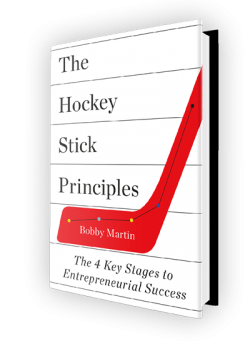During the past five years, I’ve probably heard 300 founder pitches. No joke. Unfortunately, most founders are very bad at pitching; I’ll be the first to tell you that it’s difficult to do it well. It was 1999, and I’ll never forget my brother-in-law having to step in to clarify to a mutual friend what the heck First Research’s value proposition was. I’m good at some things, but as a pitchman, I’d failed. It was an embarrassing moment since First Research was my idea.
What’s a pitch?
Simply put, your pitch is how you explain your idea to potential customers, investors, and partners. If you suck at it, which most of us do, then few people will be interested in what you’re doing. If you are good at it, you will succeed more often.
Six tips to make your pitch better
- Kill all jargon: Last week, I meet with a college student who is tinkering with a social media-related idea. In his second sentence, he threw out the term “augmented reality” without explaining what it is. This made me feel like an idiot. In that split moment, the would-be entrepreneur became distant from me. Instead of using jargon, it is wise to use very basic terms – preferably physical objects that people can feel and touch. And remember: Tech terms that are familiar to you may not be familiar to others.
- Get to the point, like, really fast: I recently spoke at the 3-Day Startup Conference in Austin, Texas. After my talk, I chatted with about 20 founders about their ideas. No offense to them because they were inexperienced and still learning (we all are), but none could explain their ideas in less than 30 seconds. Instead, they’d carry on for three or four minutes, and yet the more they talked, the more lost and confused I became.
- Know thy setting: Are you at a cocktail party? If so, pitch for 20 seconds then pause. Are you at an investor conference and asked to stand up for 3 minutes and pitch your idea? Ok, tell your story and explain in plain English the problem you’re solving. Are you meeting with an investor? Pitch for 60 seconds and then pause and allow him or her to ask questions. Be aware of your surroundings and audience.
- Stories sell: Craig Wortmann is an expert in entrepreneurial selling, and his book, What’s Your Story? is a must-read because it reveals how to connect and communicate more effectively with customers. One of his main points is that “stories work,” and he’s absolutely correct. To describe the problem you’re solving, leverage your personal story. But learn to tell your story the right way. Another good blog about storytelling is The Story of Telling. Highly recommended!
- Pitch, then pause; pitch, then pause: When you’re pitching, especially in a one-on-one setting, pitch for about 15-20 seconds, and then just stop as if you’re completely finished. This allows your listener to ask the next logical question that’s running through his or her mind. Answer their question in 15-20 seconds, and then pause again. The bottom line is give them control over the conversation.
- In order to be the best, you must learn from the best: Occasionally, you may hear a phenomenal salesperson pitch their product or idea. This past weekend, I traveled with my nephew to Clemson, South Carolina for a basketball recruiting visit. (My nephew is a playa’!) Clemson’s head coach, Brad Brownell, took us into his office to learn about playing basketball there. Coach Brownell can flat-out sell. What did he do well? He was down-to-earth. He used success stories from the past to support his claims. He offered a few mantras that he rallies behind: 1. The power of grit in accomplishing one’s goals, and 2. his methods for making his players better. He was easy to listen to, comfortable, kind, and gave everyone in the room respect. The point here is that after leaving that office, I was inspired to improve my own pitch by hearing Coach Brownell’s best practices.
Don’t forget to practice each of these tips while pitching. Use trial and error by exploring what methods work well. Most of all, have fun with your pitch, but please, please—take the process seriously. Doing so is good for you—and the listener.
Sign up to get more great insights directly to your inbox.
As a special bonus, you'll also immediately get access to my inside analysis of what made 172 diverse companies achieve take-off revenue growth.

